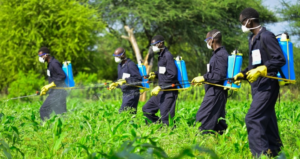Fences add value to homes and property and improve security, privacy, and functionality. They come in a variety of materials and styles.
It’s best to have professional fence installation, as mistakes or rework can end up costing more in the long run. However, if you decide to DIY, the following tips can make the process easier.

The first step in installing a fence is clearing the area where it will be placed. This will save time and frustration for you and the fence installation crew. If you have any errant rocks, toys, plants, sprinklers or anything else in the path of your fence line, clear them out so the installers can move easily and safely. You may want to consider a fence company that will do this for you as part of their overall service.
It is important to locate where sewage lines, water pipes, and electrical lines run underground in your yard. This is for safety reasons so that the crew doesn’t accidentally hit them when digging holes for the posts. Contact your local utilities or ask your fence company if they have this information. You should also check to see if there are any property easements that need to be considered.
Next, it’s important to dig post holes that are deep enough for stability. A good rule of thumb is to dig a hole that is a minimum of one-third to one-half of the height of the fence post. The type of soil also plays a role in the depth of the hole; sandy soils generally require deeper holes than loamy ones.
Once the posts are set, the rest of the fence can be installed. Be sure to follow the guidelines provided by your fence contractor for sizing and spacing. If you are using panels, make sure that they are properly secured with the screws or brackets provided. If you are using pickets, be sure to stagger them so that the seams will not show.
After the fence is finished, it is a good idea to apply a coat of preservative or stain. This will help to protect the wood from moisture and sun damage. It’s best to let the product dry completely before using the fence.
It’s a good idea to discuss the fence with your neighbors, especially if it’s going on your property line. This will prevent any issues down the road, and it’s a legal requirement in many communities.
Posts
While installing fence posts isn’t a difficult task, it requires careful planning and execution to ensure the stability of your finished product. A good rule of thumb is to bury about one-third of each post’s total length in the ground, and to space them at least six feet apart. Local building codes may require a specific minimum depth, so check with your local authority before starting.
You can use concrete, gravel, or dirt to set your fence posts. If using concrete, be sure to choose a fast-setting mix so that the post doesn’t have to be braced while it sets. If choosing gravel or dirt, be sure to compact it tightly around each post, and use a two-sided post level to make sure the posts are plumb (or perfectly vertical) before adding any additional materials.
To prevent water accumulation and rot, dig each post hole a little larger at the bottom than at the top and add about six inches of gravel to the base. This will help the soil to drain properly, and it will also help prevent the formation of puddles that could damage the posts over time.
Before setting any wood posts, be sure to treat them with a preservative or sealant. This will not only enhance their durability, but it will also help protect them from insects and fungi that would otherwise eat away at the wood. Choose a wood that is naturally resistant to decay, such as cedar or pressure-treated pine, if possible.
When setting the first couple of posts, it’s helpful to use a string and batter board to guide you. This will keep the posts a consistent distance apart and straight, which is critical to creating a well-aligned and sturdy fence.
Once the first two posts are set, dig holes for the remaining posts. Call 811 before digging to learn the location of underground utilities, and then remove any rocks, roots, or other debris that may be in the way of the post holes. Before you start digging, be sure to have your concrete ready; it usually takes four to six hours for it to cure. Once the concrete has cured, you can cover it with soil to give the posts a more natural appearance, or you can opt to leave them bare.
Panels
Choosing the right fence panels is critical to ensuring a safe and durable property boundary. Options range from wood to vinyl, each with their own advantages and disadvantages. Understanding these differences and selecting the best option can help ensure your project is a success.
Premade fence panels are a convenient alternative to constructing a custom fence from scratch. They save time by eliminating the need to mark where posts will go, run plumb lines, dig holes, and set concrete. Nevertheless, they may not be ideal for hilly terrain or unique design requirements that require more flexibility.
Before installing fence panels, make sure the posts are plumb and level with each other by driving a stake at each location then stretching a line across the ground to determine if it’s straight. Once you’ve determined the proper height of your fence, measure and mark the locations of the corners of each panel. Start with the corner posts and work outward from there, building one panel at a time. It’s important to use blocking underneath each panel when setting it to prevent it from sagging or bowing over time.
Using wood fence panels requires regular maintenance to protect it from weathering, rot, and pest infestation. Staining or painting can be helpful to preserve the wood’s aesthetic and structural integrity. However, these methods are not foolproof and may require regular reapplications.
Another consideration is the impact of fence panels on a home’s value. The style and condition of a fence has a significant influence on its perceived value. Researching which fence styles are most appealing to potential buyers and how they can enhance the curb appeal of a home is essential for achieving a positive first impression and increased property valuations.
Wood fence panels offer numerous design and customization options to match a homeowner’s aesthetic preferences and property specifications. However, these choices often add to the overall cost of the project. Consideration of alternative materials, such as aluminum or vinyl, can significantly reduce installation costs while ensuring a safe and secure yard.
Sustainable fencing solutions also involve assessing the materials used in fence panels and their environmental footprint. This involves evaluating whether they are recycled or sourced from renewable resources, and examining the manufacturing process to ensure it uses energy efficiently and minimises waste.
Final Touches
After the posts have been set, it’s time to install the rails and panels. This is when your fence really starts to take shape and can be seen from the street or garden. Again, precise measurements are key to ensuring the final product is consistent and aesthetically pleasing. This is also the point when your fencing contractor will likely apply any necessary finishing touches, such as gate installations or the addition of hardware and decorative features.
After preparing the area—removing any rocks, plants, or debris that could hinder installation—the fence line is marked with stakes or spray paint. The fence installer will also call 811 to mark any underground utilities like sprinkler lines or electrical cables (if applicable). This step is important, as it ensures that any digging work does not disturb these vital services.
Once the post locations have been mapped out, stakes are driven into the ground where the posts will be located, usually 6-feet to 8-feet apart. These marks will be used to guide the construction of your fence. When all the posts are in place, they will be leveled and aligned to the fence line using a post level. After they’re properly set, concrete is poured into the holes to secure them. This is a critical process, as the stability of your fence relies on these being set properly.
Depending on your choice of fence material, your contractors may use screws or nails to secure the panels to the posts. Some types of fences require special fasteners, while others can be installed with the help of a tool called a Fence Stretcher, which distributes tension evenly along the entire length of the fence. Once the panels are in place, your fencing contractors will attach a wire to each post, using fence staples or ties designed for your specific type of post. This will help hold the wire in place and prevent it from sagging or falling off the posts over time.
While it’s easy to get intimidated by the idea of installing a fence, partnering with a reputable contractor can make the process straightforward and efficient. Be sure to do your homework before selecting a contractor, reading reviews, comparing quotes, and checking licensing and insurance coverage. With proper care and attention to detail, your new fence will add both functionality and value to your property.


